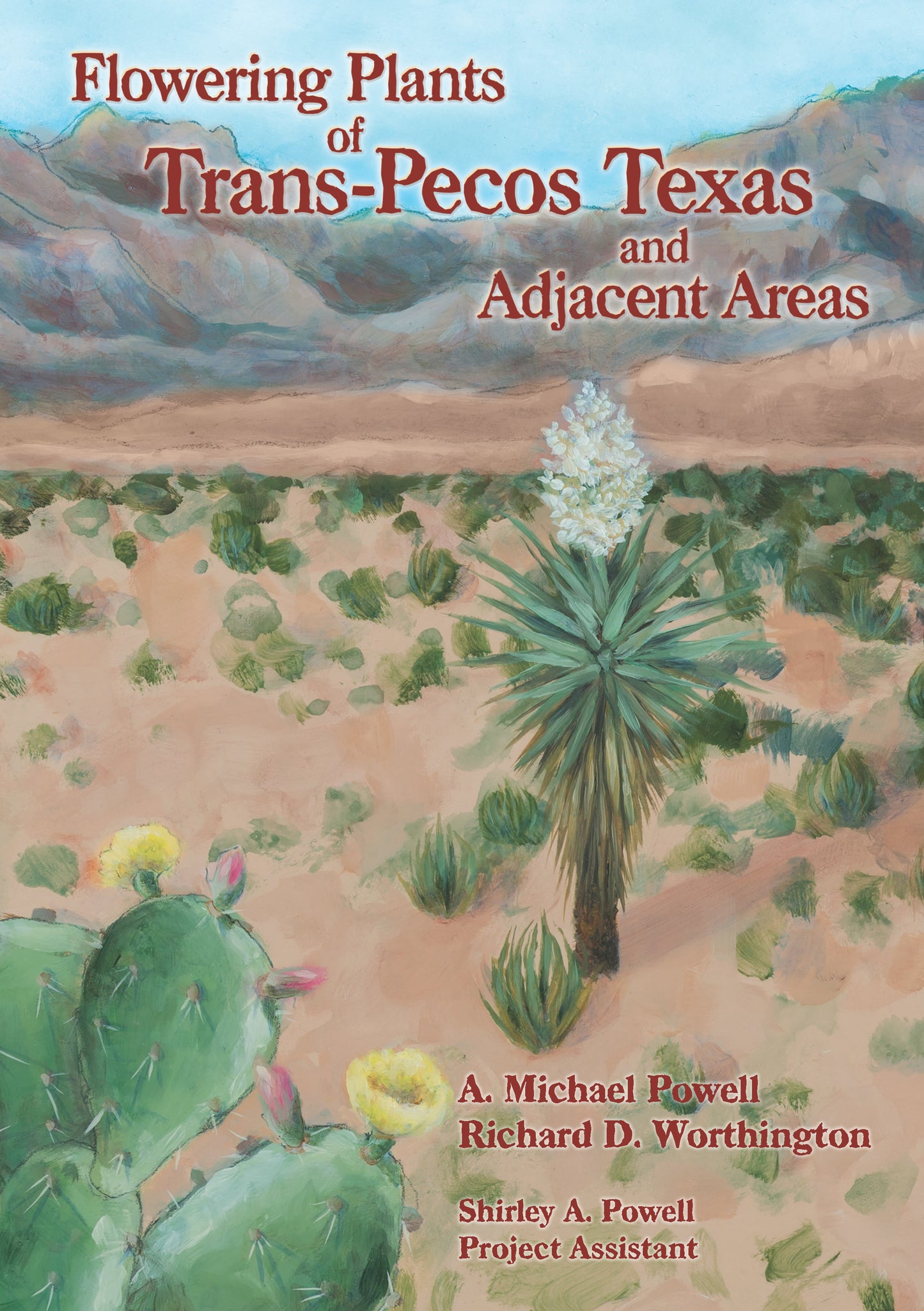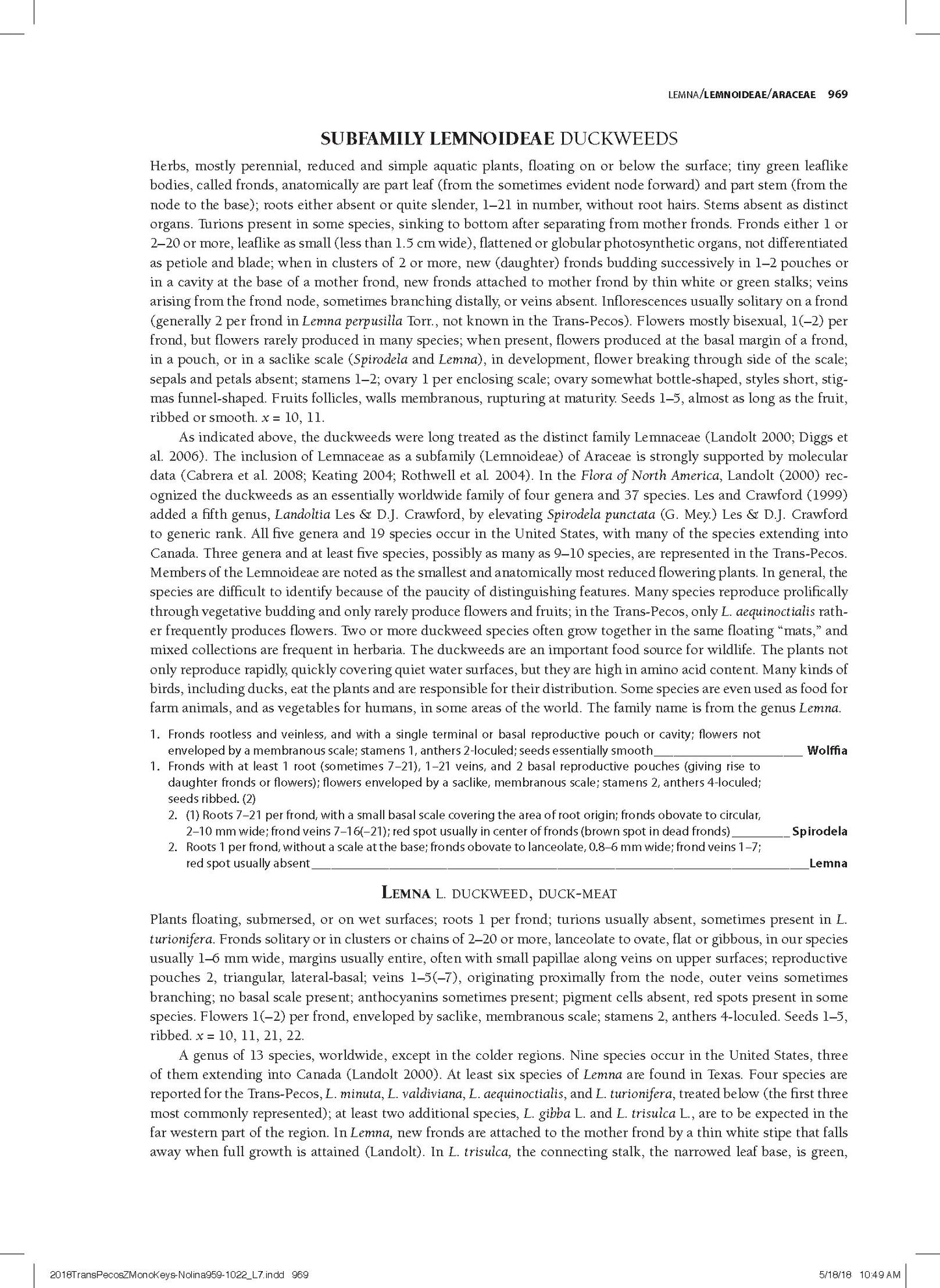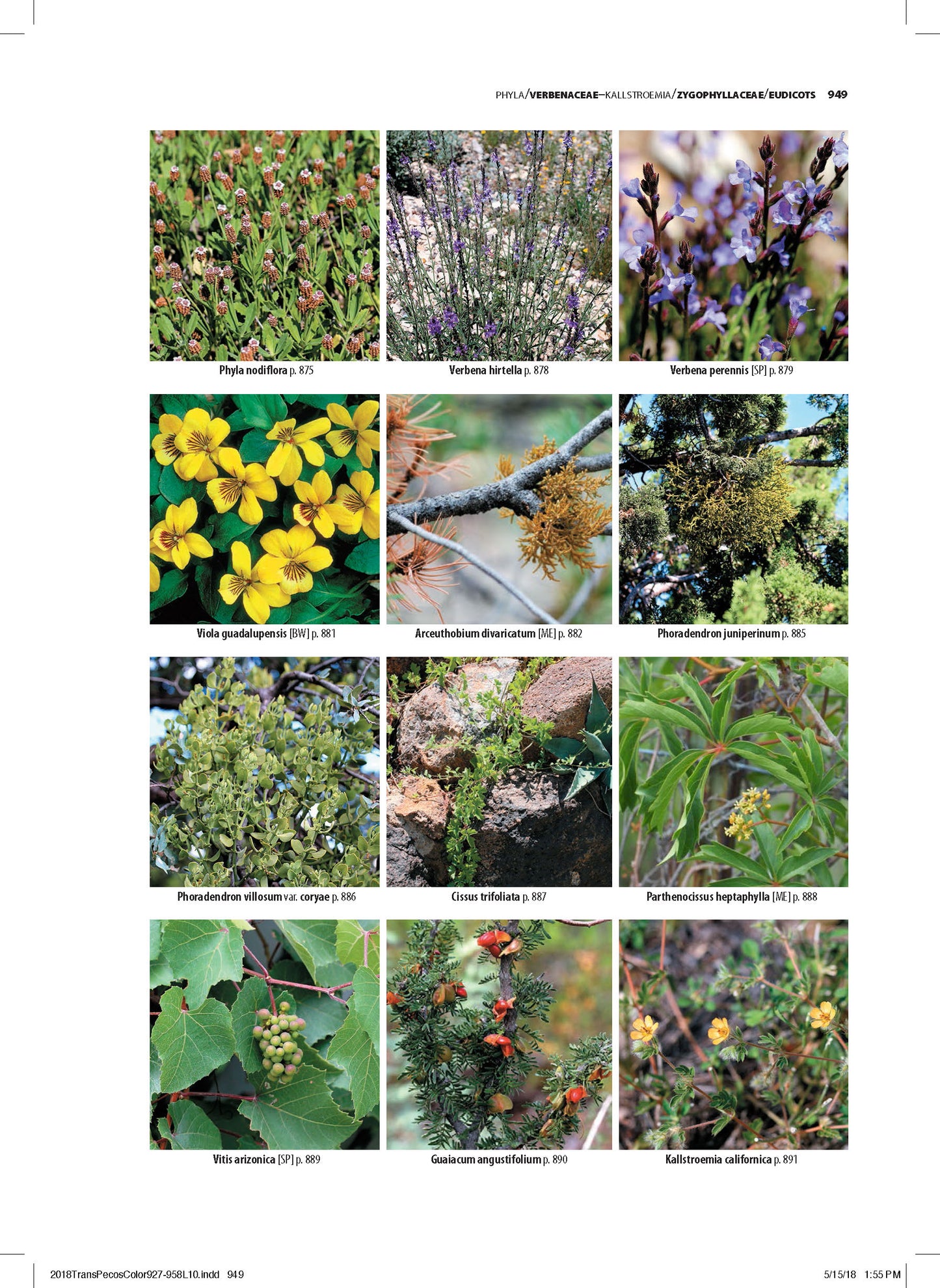The BRIT Store
Flowering Plants of Trans-Pecos Texas and Adjacent Areas
Flowering Plants of Trans-Pecos Texas and Adjacent Areas
Couldn't load pickup availability
Authors:
By A. Michael Powell and Richard D. Worthington
SBM 49
ISSN 0883-1475
ISBN-13: 978-1-889878-59-1
Publication Date: 1 November 2018
Copyright © 2018 A. Michael Powell and Richard D. Worthington
Specifications: 7.5"×10.5" (hbk), 1464 pp., 768 color photos., 44 introduction photos and maps (dust jacket design & illustration by Layla Luna)
About the Book
This is the first complete floristic treatment of all of the native and naturalized flowering plant species known to occur in Trans-Pecos Texas. The Trans-Pecos is mostly a mountain and desert region west of the Pecos River, an area the size of South Carolina. The region also is part of the northern Chihuahuan Desert, said to be the most biologically diverse arid region in the Western Hemisphere. Approximately 44.5% of all the plant species in Texas are represented in the Trans-Pecos, a total of ca. 2447 vascular plant species.
This book features taxonomic treatments of 2343 flowering plant species, along with 120 subspecific taxa, and presents botanical information that will be useful to students, teachers, wildlife biologists, wildflower enthusiasts, ranchers, private and public land managers, naturalists, conservationists, environmental consultants, researchers, gardeners, interpreters at state and national parks, and the general public. The Introduction includes brief coverage of topics such as the flora area, physiography, substrates, vegetative associations partially illustrated by color photos, phytogeography, and a botanical history of the region emphasizing early plant collectors and botanical faculty of the two universities in the region.
The major portion of the book involves the Descriptive Flora, i.e., keys to identification, descriptions, and taxonomic treatments of the flowering plants, arranged in alphabetical order by family, genus, and species. The treatment of each species includes the scientific name, common name(s), representative collection localities, flowering period, elevation in the flora area, distribution in the rest of Texas and elsewhere, if applicable, and a discussion paragraph featuring biological information about the species and its relatives. Derivation of scientific names is given for each family, genus, species, and many subspecific taxa. Identification of species is aided by 768 color images. The extensive Literature Cited section includes 2207 references.
About the Authors
A. Michael Powell, Distinguished Professor Emeritus in Biology and Director of the Sul Ross State University Herbarium (SRSC). He holds a Ph.D. in Botany from The University of Texas at Austin, 1963. His research interests include plant systematics, emphasizing monographic studies of composite genera in the southwestern United States and Mexico; chromosome numbers of North American and South American plants, mostly composites; floristics of the northern Chihuahuan Desert Region, including gypsum habitats; experimental hybridization studies in composites and cacti; rare plants of Trans-Pecos Texas; and native plant horticulture. He is author or co-author of over 120 articles in professional publications and several books concerning the flora of western Texas, including Trees and Shrubs…, Grasses…, and Cacti of the Trans-Pecos and Adjacent Areas.
Richard D. Worthington, Associate Professor Emeritus in Biology at The University of Texas at El Paso and Curator of the UTEP Herbarium. He holds a Ph.D. in Zoology and Ecology, University of Maryland, College Park, 1968. Since the middle 1970s, his research interests have been focused on plant diversity on mountains of different sizes in the southwestern United States and the documentation of the flora across southern New Mexico and western Texas. His plant collecting activities, mostly in the southwest U.S., Mexico, and the Caribbean, have resulted in 39,000 collection numbers. He is author or co-author of numerous articles in professional journals. Knowledge about the Trans-Pecos flora and biota has been significantly augmented through numerous issues of his Floristic Inventories of the Southwest Program.
Shirley A. Powell is a retired high school science teacher. She has an M.S. in Biology, Sul Ross State University, 1973. She taught biology, chemistry, and physics for 30 years and has extensive field experience in collecting and photographing gypsophiles, cacti, and other plants native to the Texas mountains and desert. She is co-author of numerous journal articles as well as two books, Native Plants in Landscaping, 2005, and Cacti of Texas—A Field Guide, 2008; a botanical illustrator; and curatorial assistant at SRSC. She served as a consultant for the Texas Education Agency and currently serves as President of the Board of Directors of the Chihuahuan Desert Research Institute.








